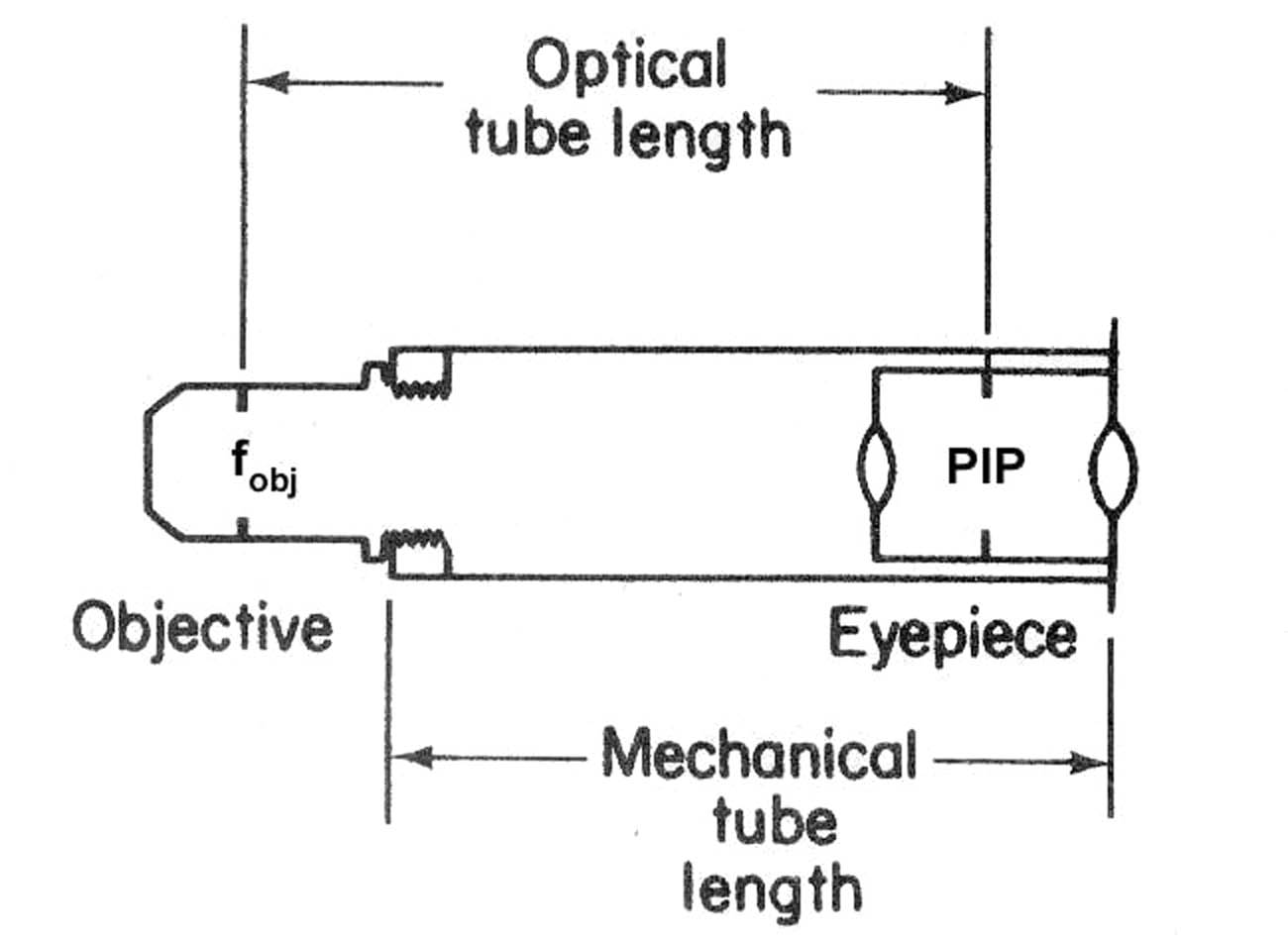TUBE LENGTH

The term tube length refers to the optimal distance of an eyepiece from its objective where the distance results in the clearest image. There are actually two different types of tube length. These are: 1)The Mechanical Tube Length(MTL) and 2)The Optical Tube Length(OTL). The mechanical tube length is the distance from the top of the tube to the nosepiece without the objective in place.
The OTL is the distance between the back focal plane of the objective, and the primary image plane in the eyepiece and, all things being equal will vary with the focal length of the objective. Shorter focal length (higher power) objectives will need to have a back focal plane deeper within the objective to maintain parfocality. Standard tube lengths in England and the USA in the mid-19th century were 10 inches. In Europe, and especially Germany the standard tube length was 160 mm with the except of Leitz where it was for a time 170mm until changed. In the later 19th century, 8.5 inches was common for standard tube length, especially for Bausch & Lomb. Because in the late 19th century B & Lomb also made objectives for the European standard of 160 mm, some objectives of that era are marked with tube length. In fact, tube length became a standard thing found on objectives of the 20th century, especially as many adopted the 160 mm standard. More recently, objectives have been designed to have an infinite tube length, requiring a corrective tube lens within the body of the microscope to be usable. These objectives have the marking of the infinity symbol, ∞.
Some pertinent equations:
Magobj =OTL/FLobj
FLobj= OTL/Magobj
Total Magnification of Microscope=MagObjective X Mag eyepiece
OTL=optical tube length FL=Focal Length Mag=Magnification obj=Objective
